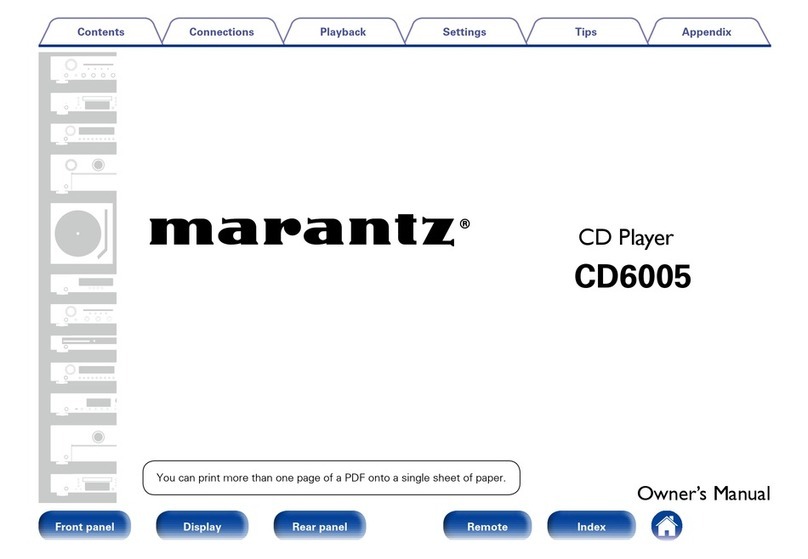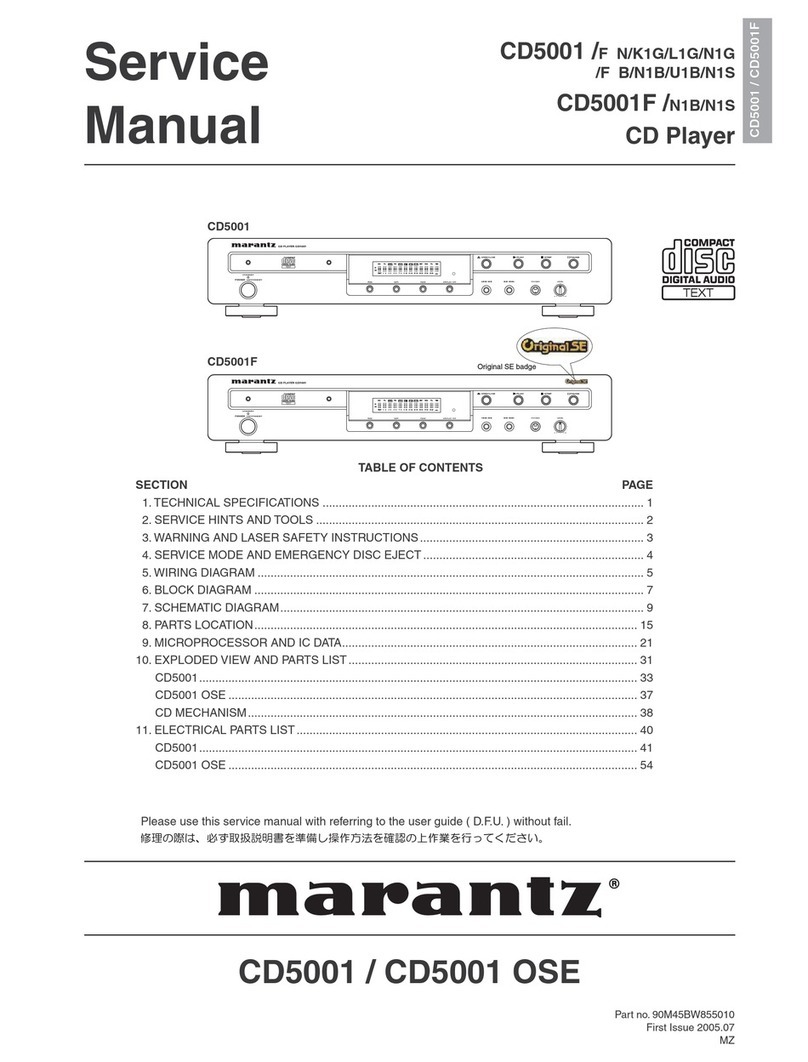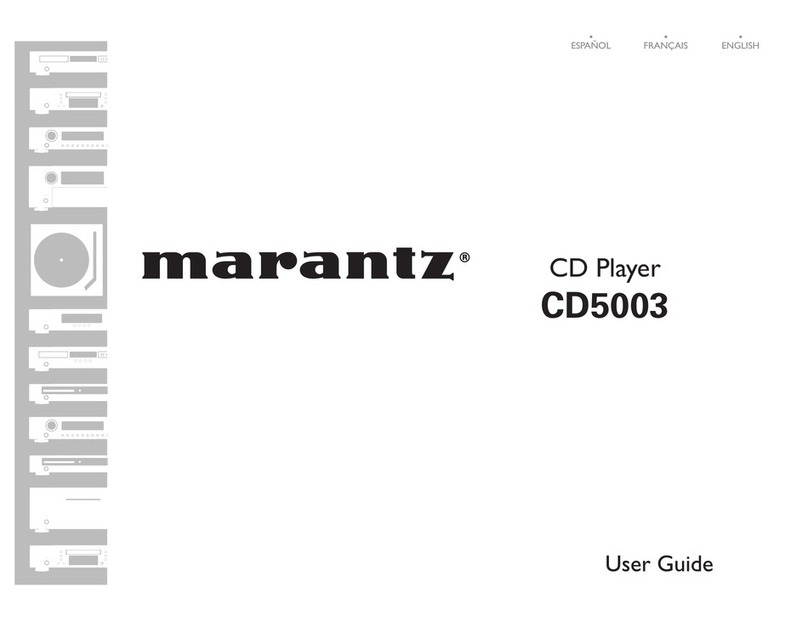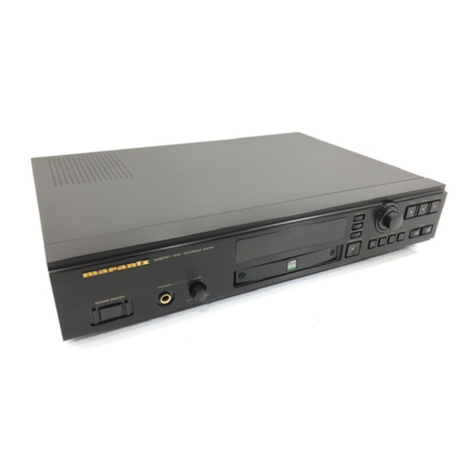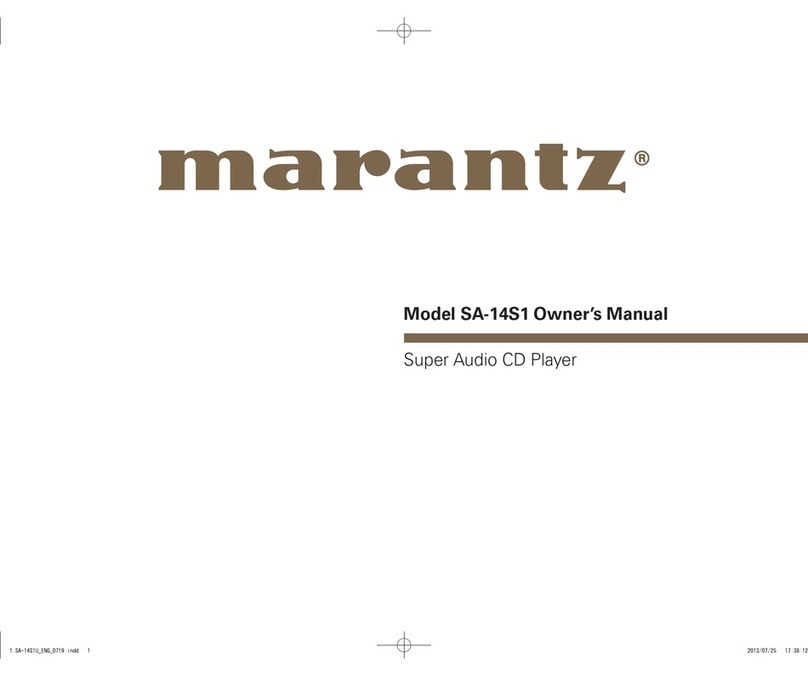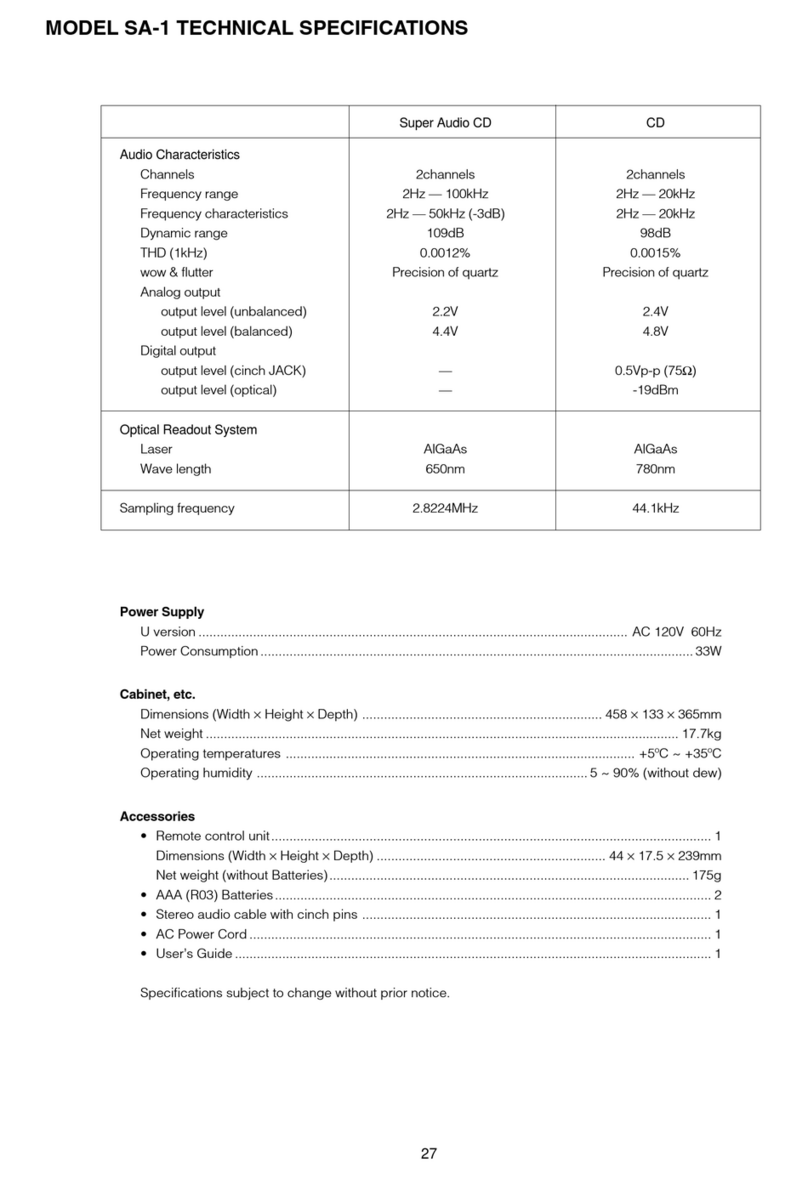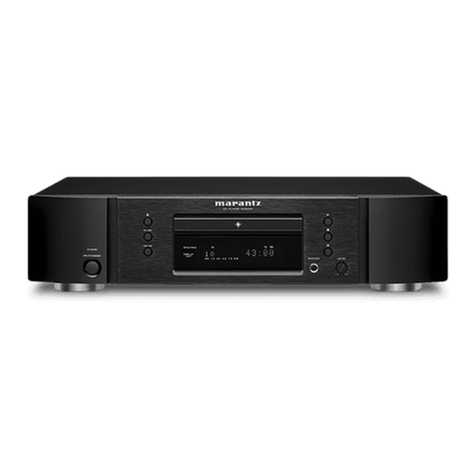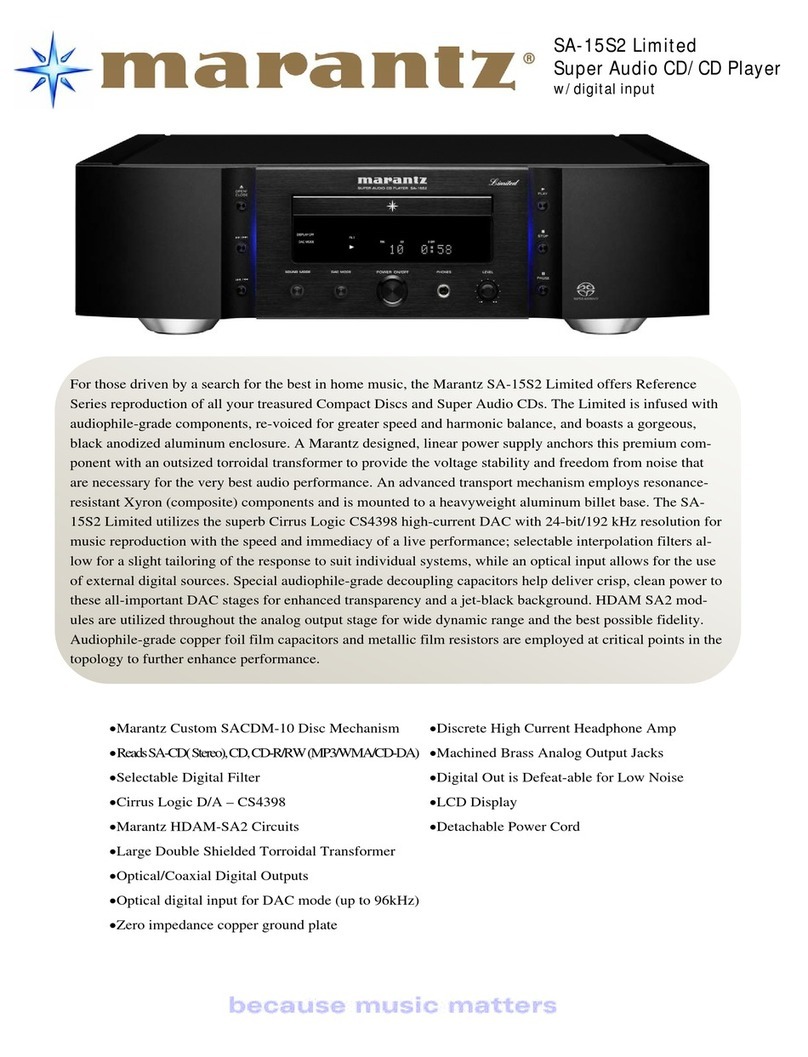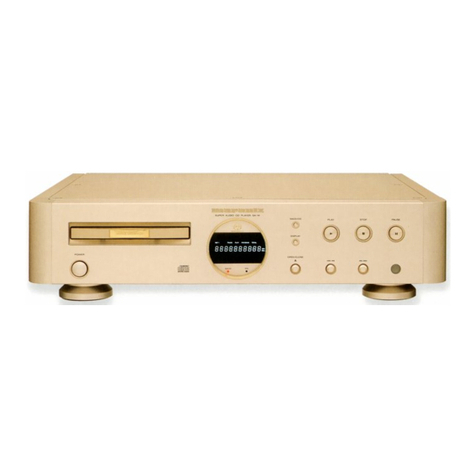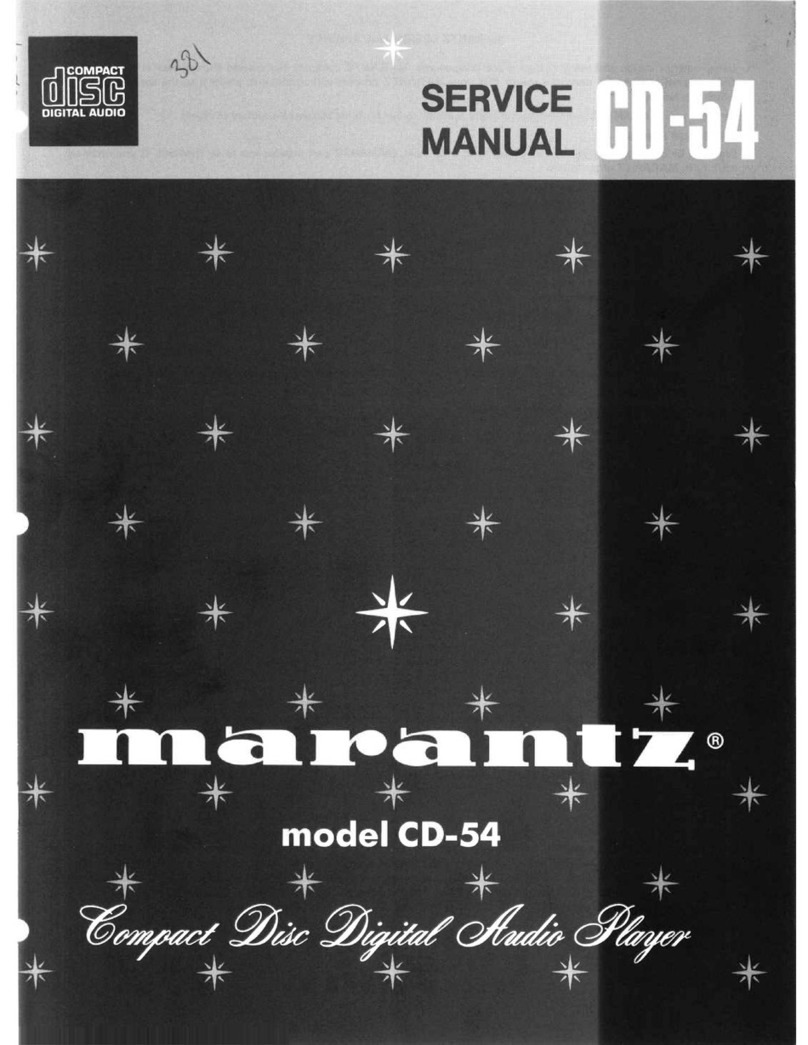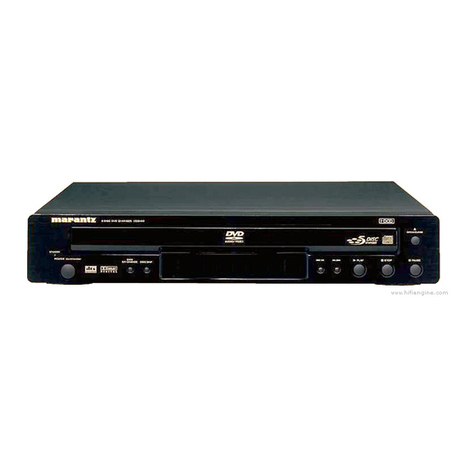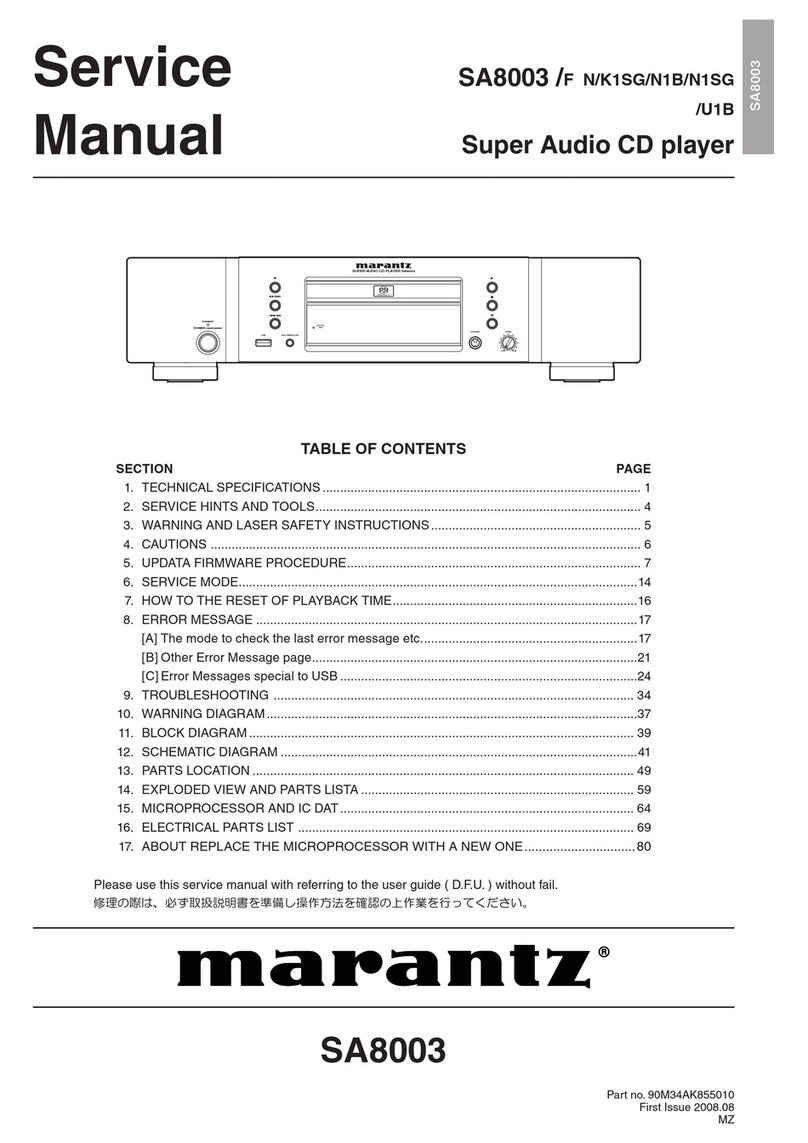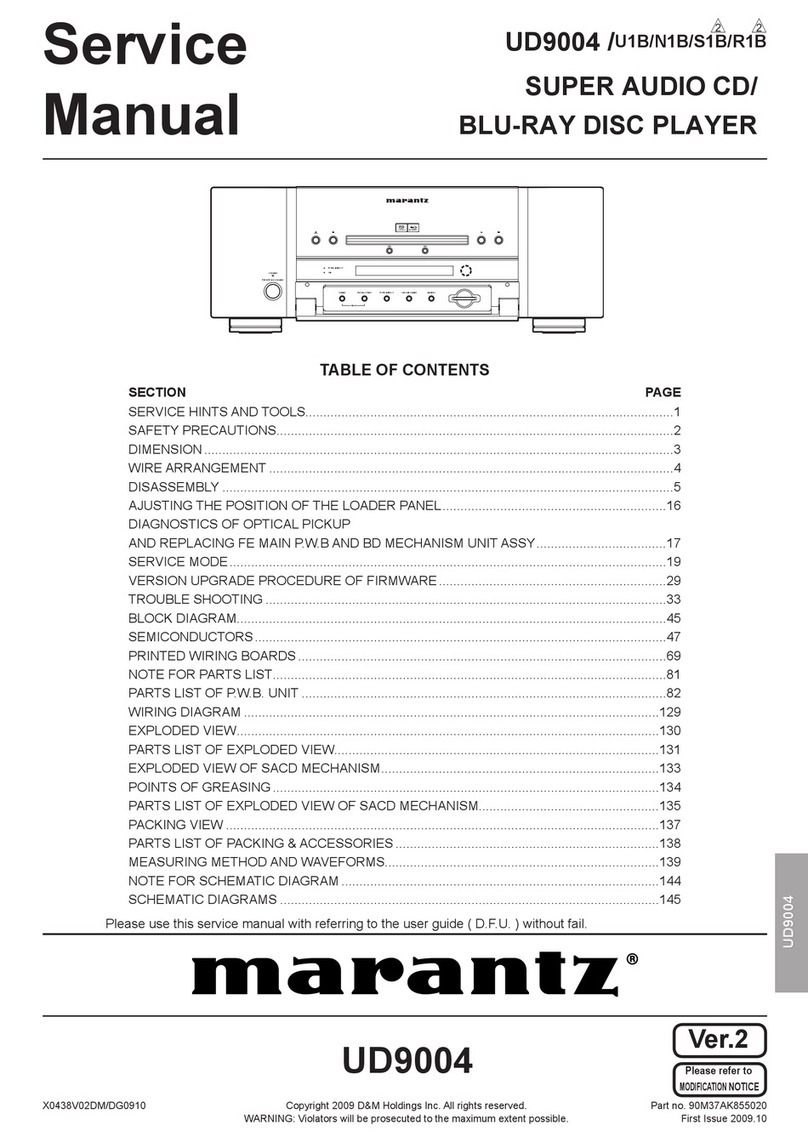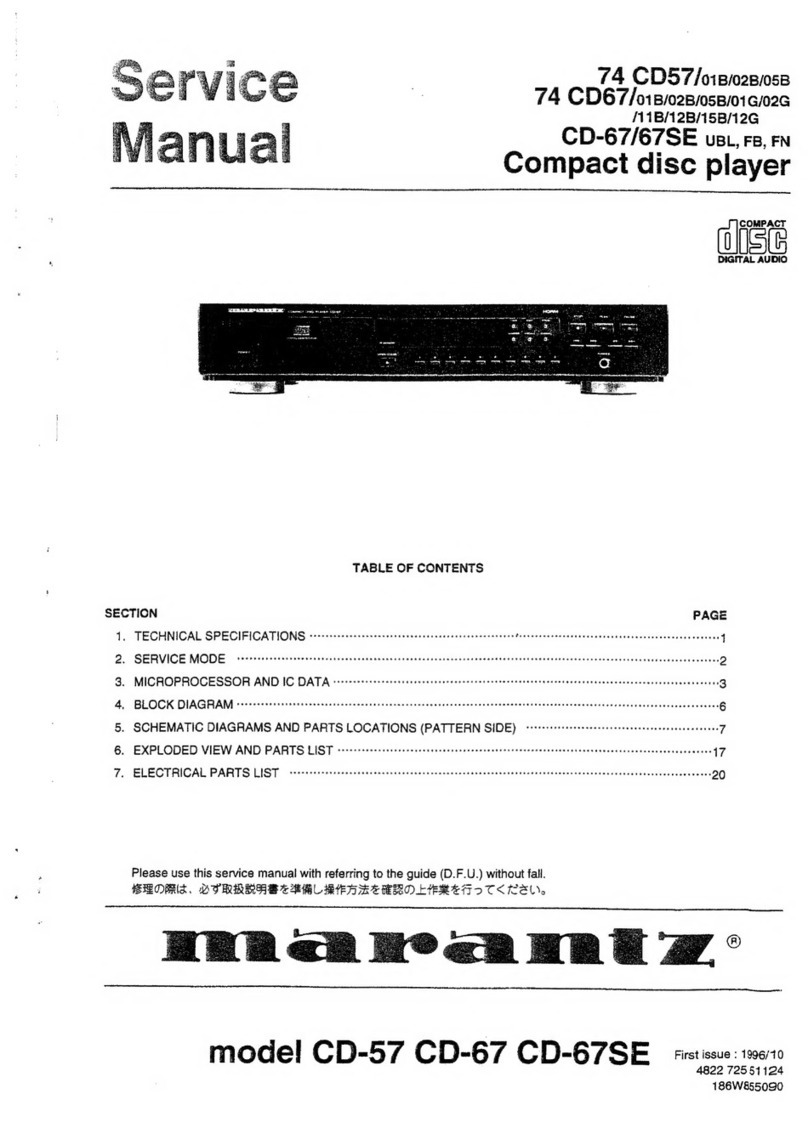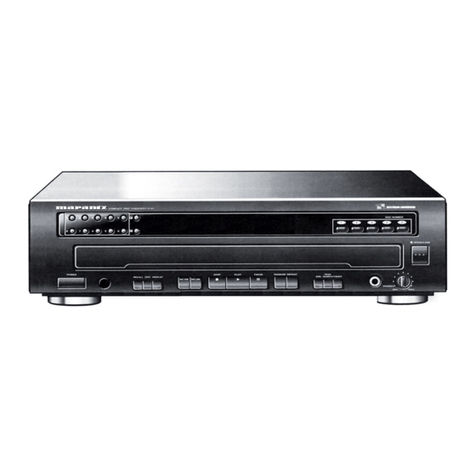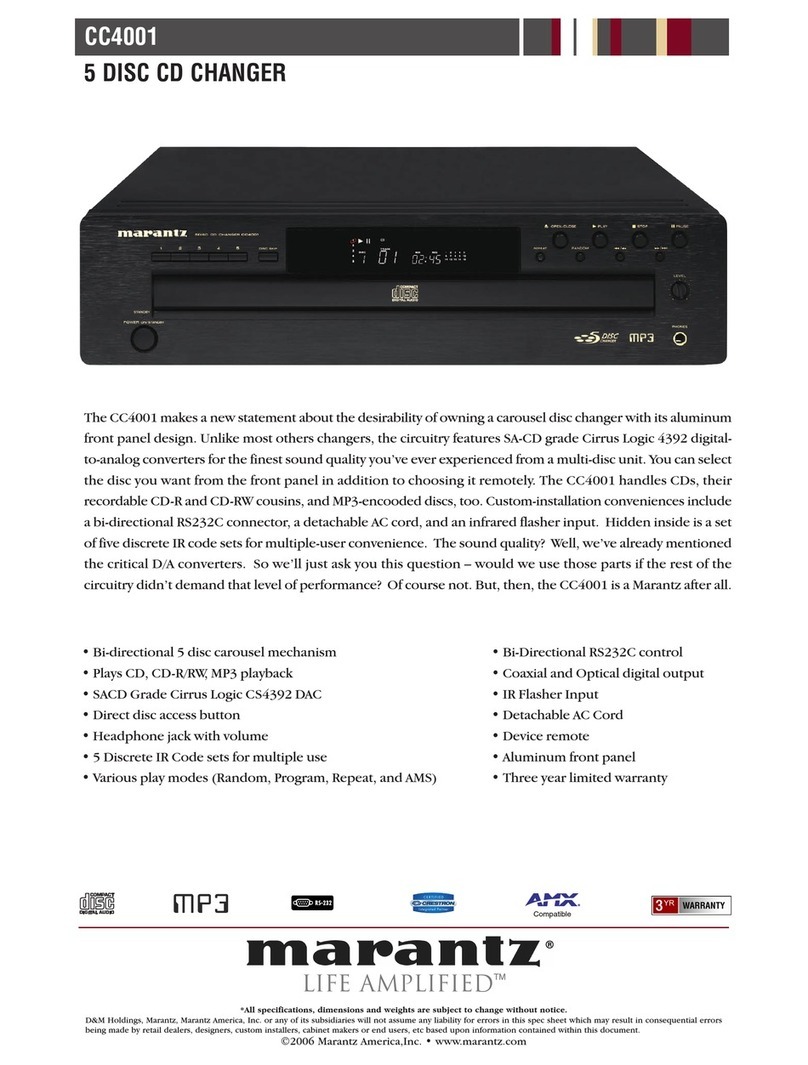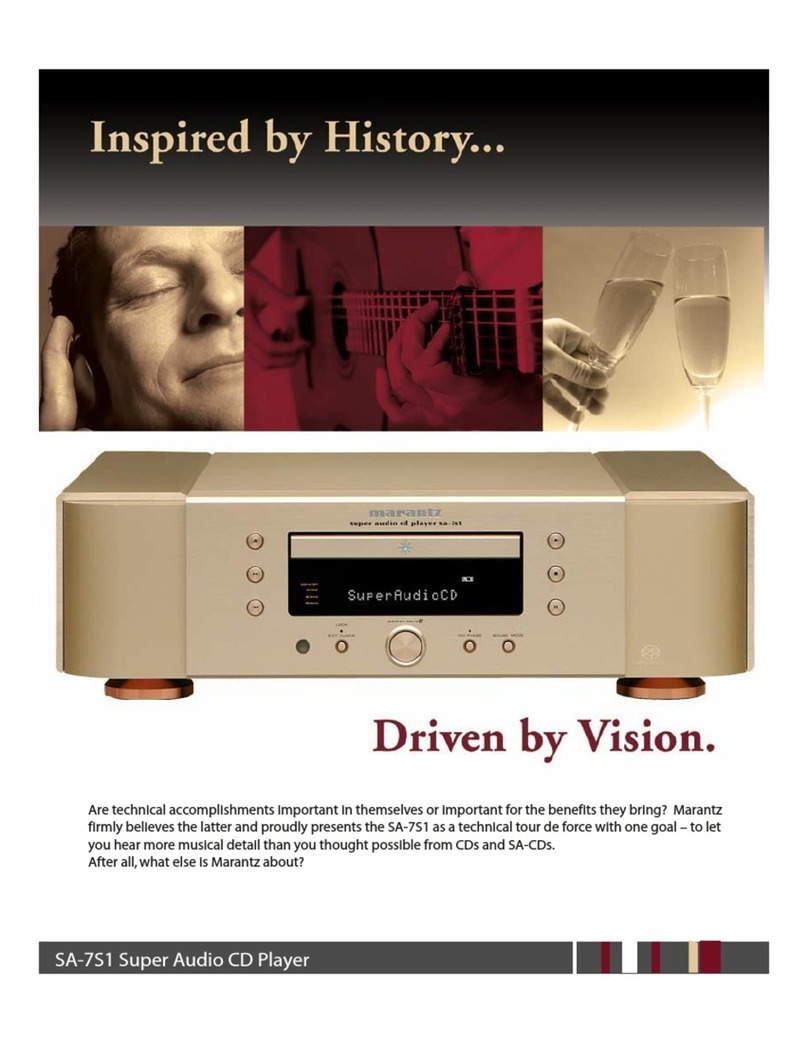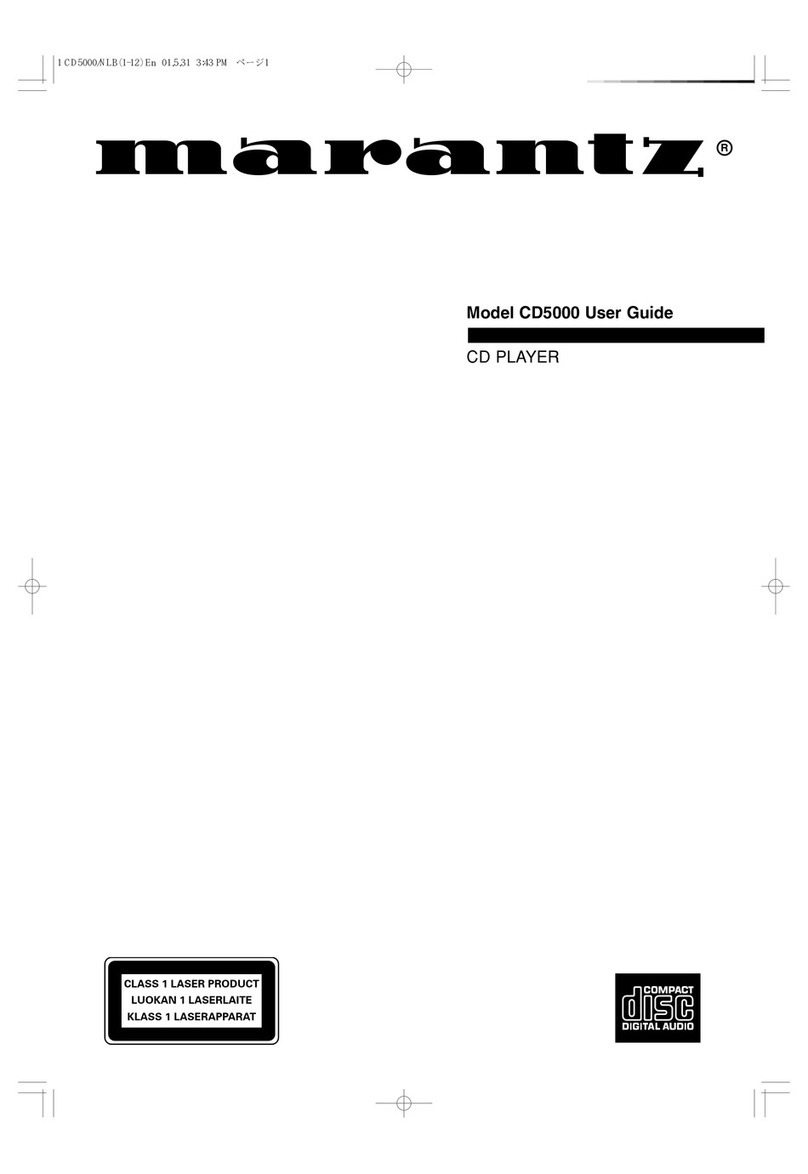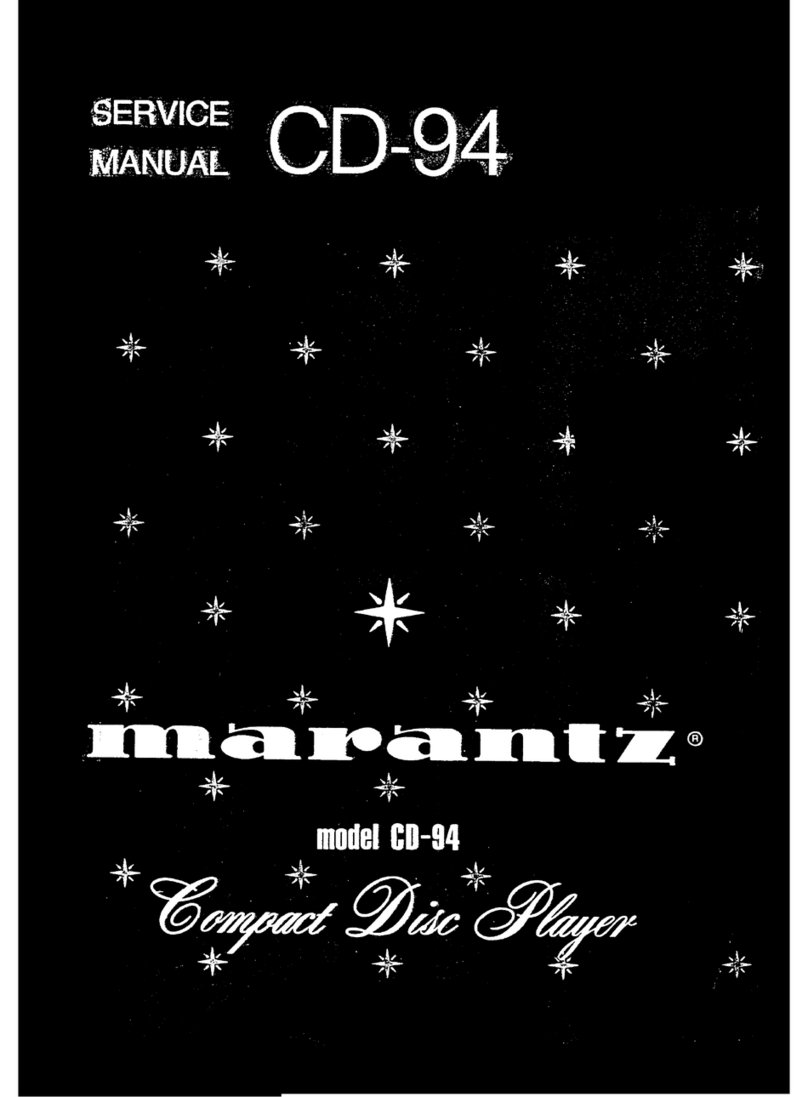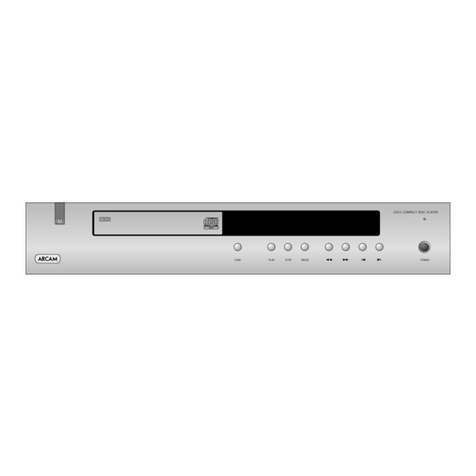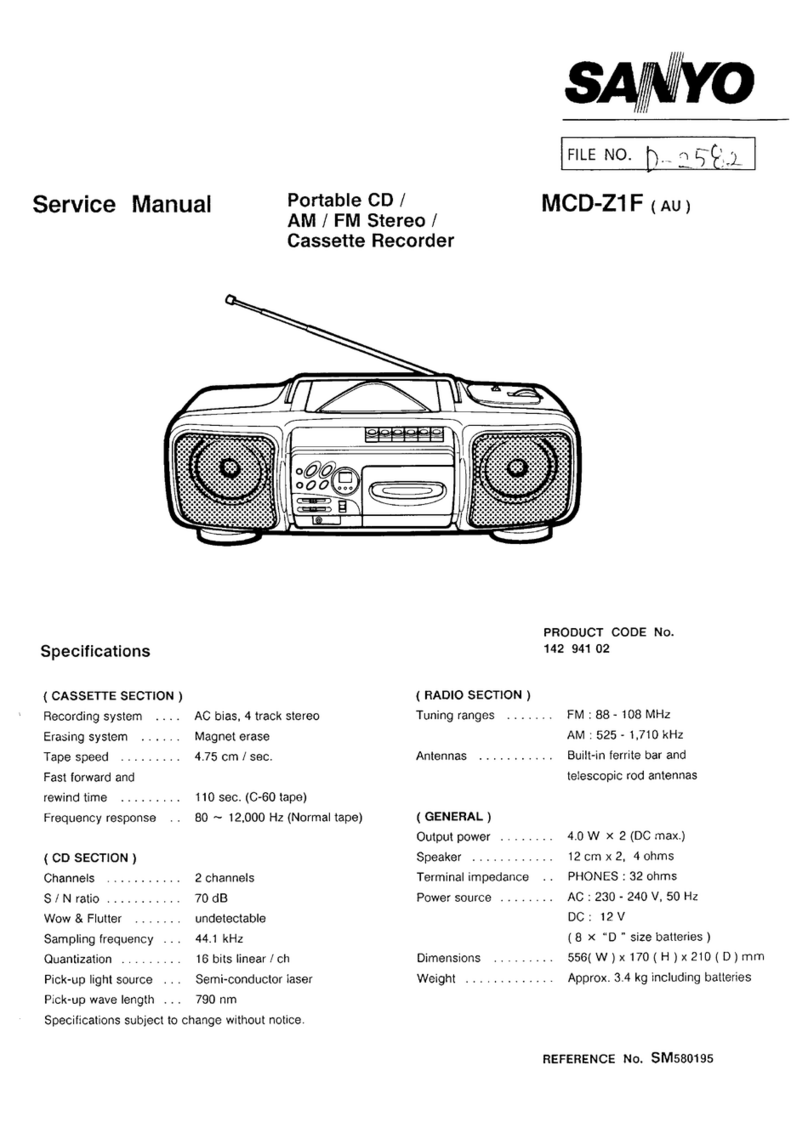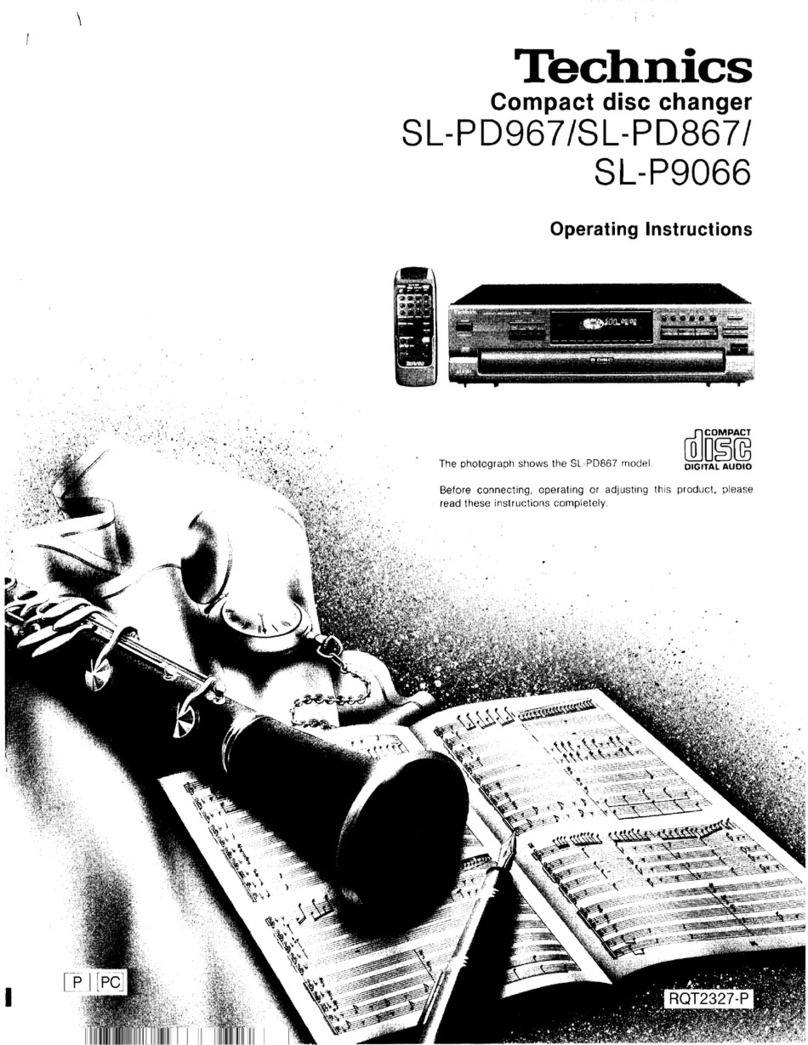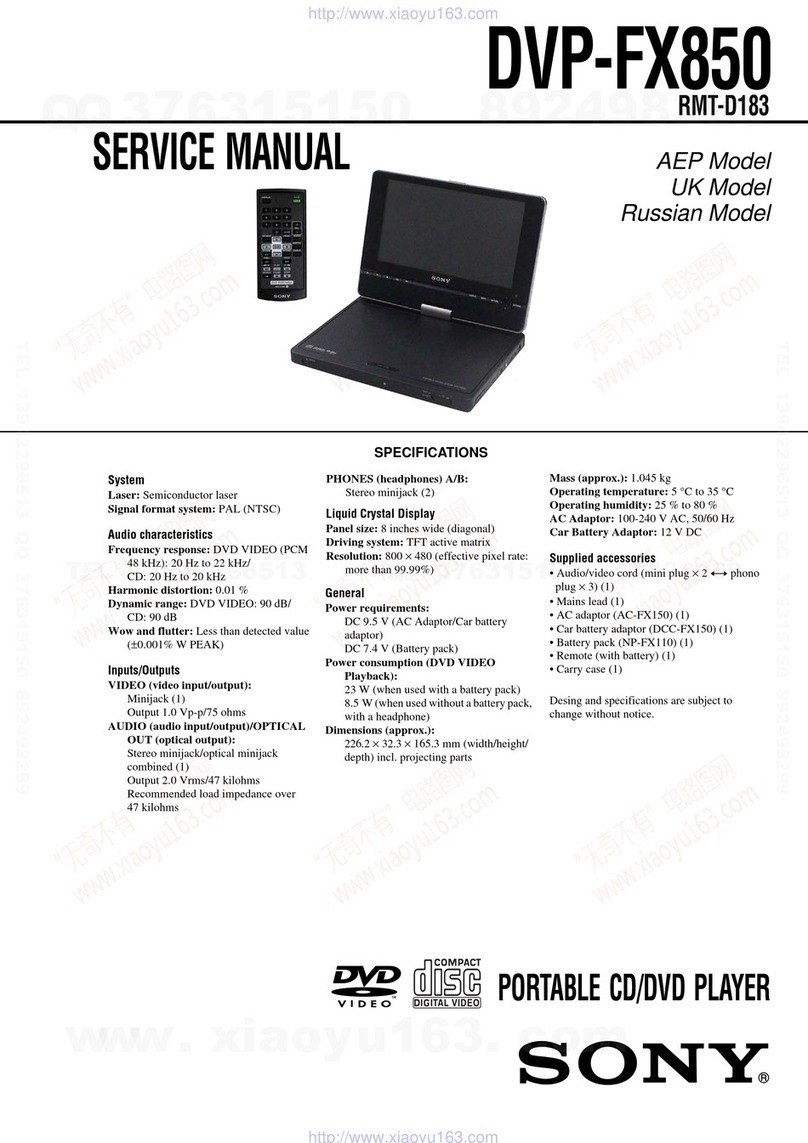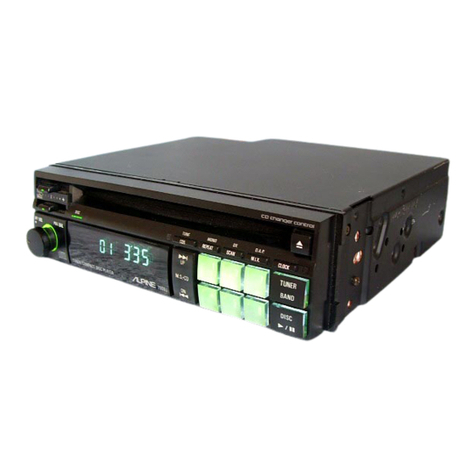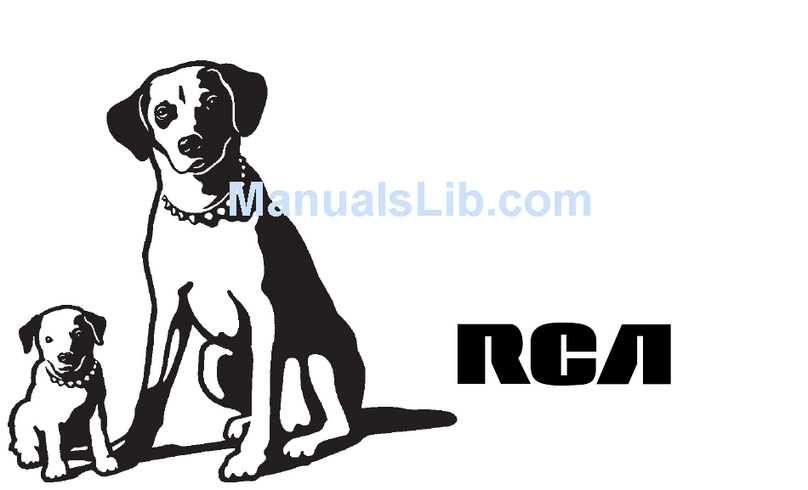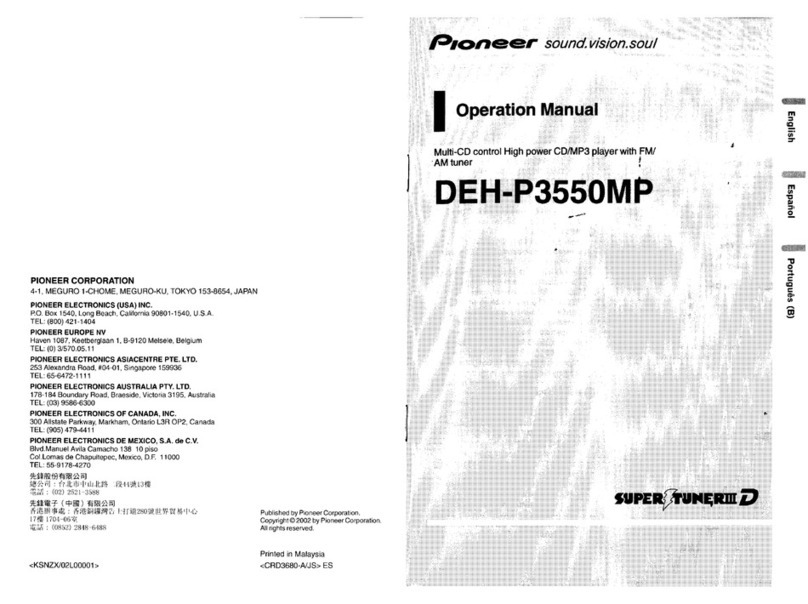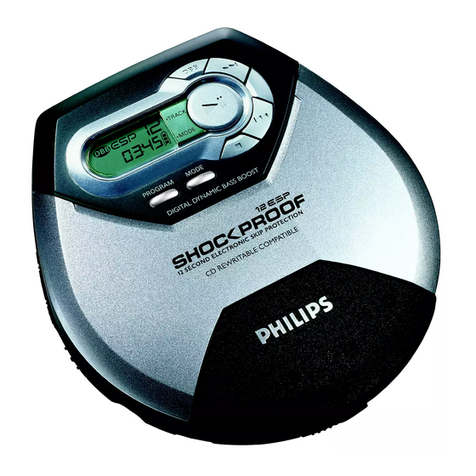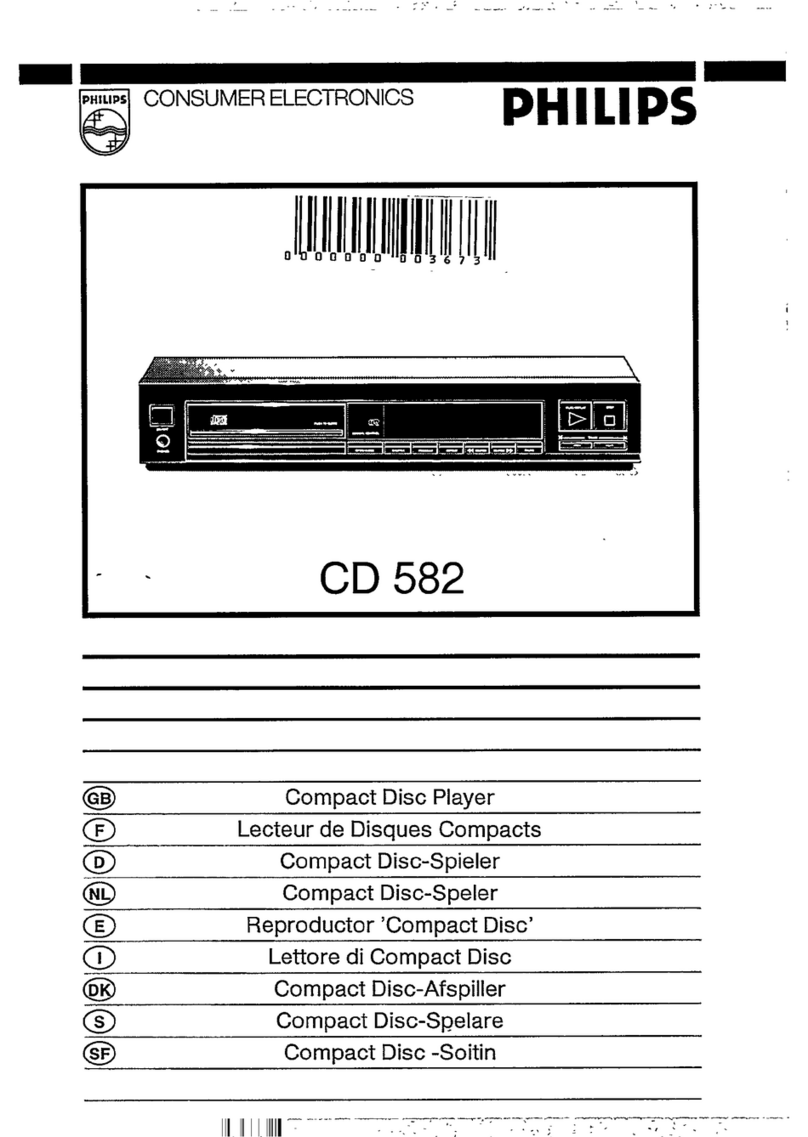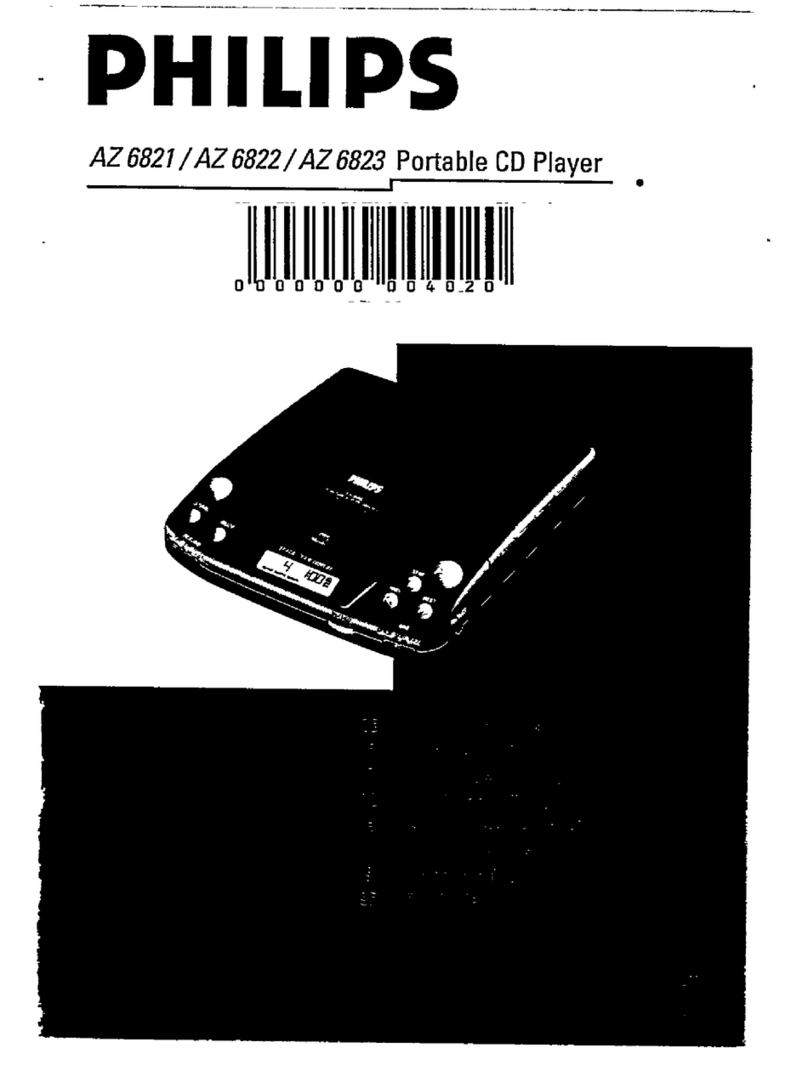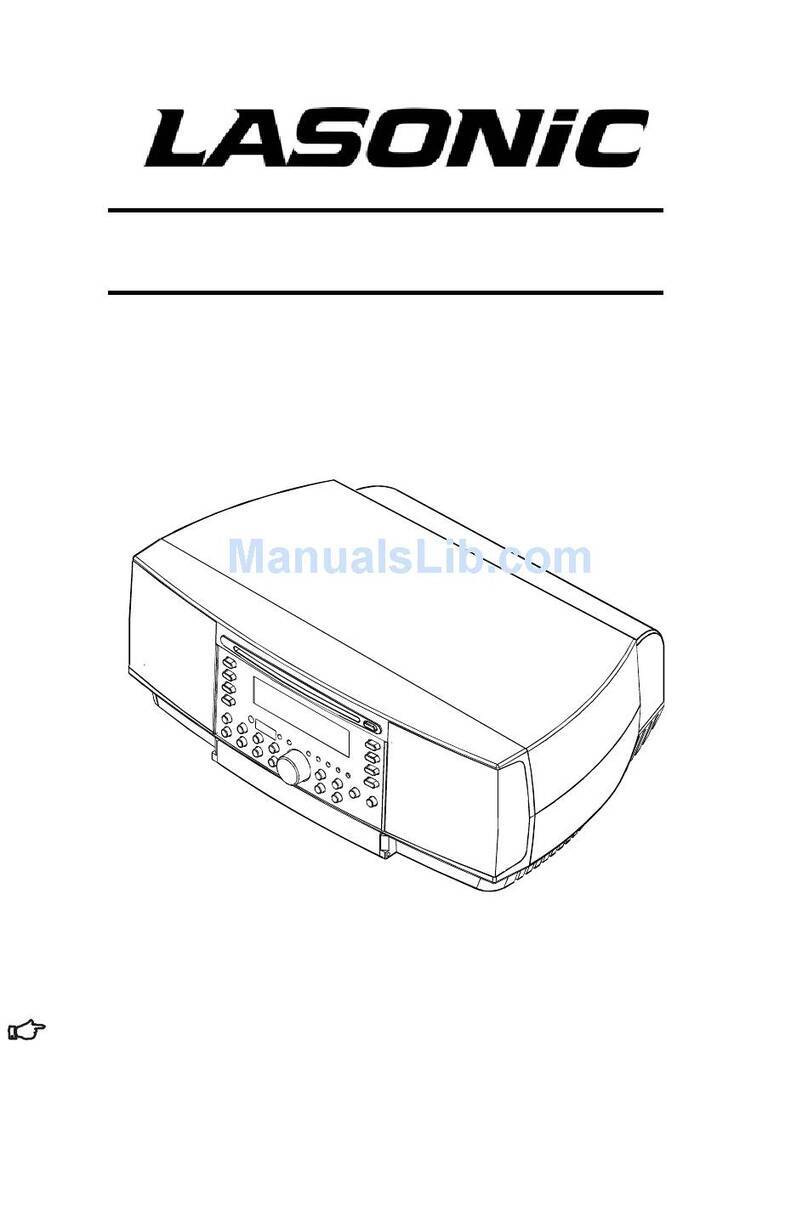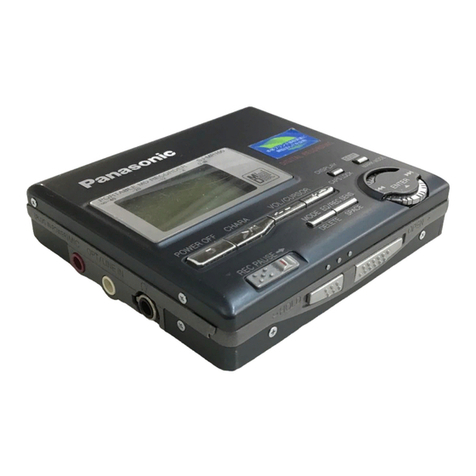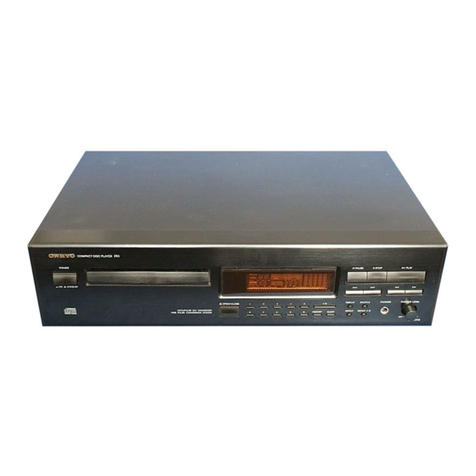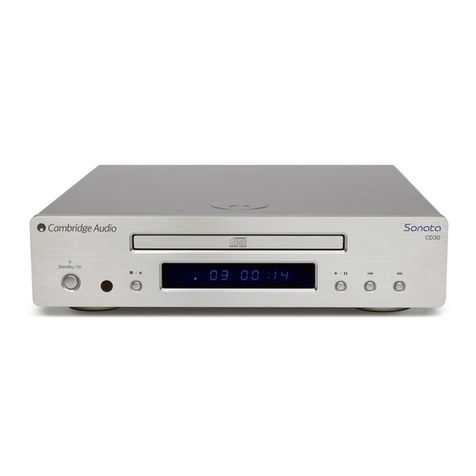4
En lish
T is product was designed and manufactured to meet strict quality and safety stan-
dards. T ere are, owever, some installation and operation precautions w ic you
s ould be particularly aware of.
1. Read Instructions - All t e safety and operating instructions s ould be read
before t e appliance is operated.
2. Retain Instructions - T e safety and operating instructions s ould be retained for
future reference.
3. Heed Warnin s - All warnings on t e appliance and in t e operating instructions
s ould be ad ered to.
4. Follow Instructions - All operating and use instructions s ould be followed.
5. Water and Moisture - T e appliance s ould not be used near water - for example,
near a bat tub, was bowl, kitc en sink, laundry tub or swimming pool, or in a wet
basement.
6. Carts and Stands - T e appliance s ould be used only wit a cart or stand t at is
recommended by t e manufacturer.
6A. An appliance and cart combination s ould be moved wit
care. Quick stops, excessive force, and uneven surfaces may
cause t e appliance and cart combination to overturn.
7. Wall or Ceilin Mountin - T e appliance s ould be mounted to a wall or ceiling
only as recommended by t e manufacturer.
8. Ventilation - T e appliance s ould be situated so t at its location or position does
not interfere wit its proper ventilation. For example, t e appliance s ould not be
situated on a bed, sofa, rug, or similar surface t at may block t e ventilation open-
ings; or, placed in a built-in installation, suc as a bookcase or cabinet t at may
impede t e flow of air t roug t e ventilation openings.
9. Heat - T e appliance s ould be situated away from eat sources suc as radiators,
eat registers, stoves, or ot er appliances (including amplifiers) t at produce eat.
10. Power Sources - T e appliance s ould be connected to a power supply only of
t e type described in t e operating instructions or as marked on t e appliance.
11. Groundin or Polarization - Precautions s ould be taken so t at t e grounding
or polarization means of an appliance is not defeated.
Caution:
To prevent electric
s ock, matc t e wide blade of t is plug to t e wide
slot and fully insert. Do not use t is (polarized) plug
wit an extension cord, receptacle or ot er outlet
unless t e blades can be fully inserted to prevent
blade exposure.
12. Power Cord Protection - Power supply cords s ould be routed so t at t ey are
not likely to be walked on or pinc ed by items placed upon or against t em, paying
particular attention to cords and plugs, convenience receptacles, and t e point
w ere t ey exit from t e appliance.
13. Cleanin - T e appliance s ould be cleaned only as recommended by t e manufac-
turer.
14. Power Lines - An outdoor antenna s ould be located away from power lines.
15. Outdoor Antenna Groundin - If an outside antenna is connected to t e receiver,
be sure t e antenna system is grounded so as to provide some protection against
voltage surges and built up static c arges.
Section 810 of t e National Electrical Code, ANSI/NFPA No. 70-1984, provides
information wit respect to proper grounding of t e mast and supporting structure,
grounding of t e lead-in wire to an antenna disc arge unit, size of grounding con-
nectors, location of antenna-disc arge unit, connection to grounding electrodes, and
requirements for t e grounding electrode. See figure below.
16. Non-use Periods - T e power cord of t e appliance s ould be unplugged from t e
outlet w en left unused for a long period of time.
17. Object and Liquid Entry - Care s ould be taken so t at objects do not fall and liq-
uids are not spilled into t e enclosure t roug openings.
18. Dama e Requirin Service - T e appliance s ould be serviced by qualified ser-
vice personnel w en:
A. T e power supply cord or t e plug as been damaged; or
B. Objects ave fallen, or liquid as spilled into t e appliance; or
C. T e appliance as been exposed to rain; or
D. T e appliance does not appear to operate normally or ex ibits a marked c ange
in performance; or
E. T e appliance as been dropped, or t e enclosure damaged.
19. Servicin - T e user s ould not attempt to service t e appliance beyond t at
described in t e operating instructions. All ot er servicing s ould be referred to
qualified service personnel.
SAFETY INSTRUCTIONS – Read before operatin equipment

